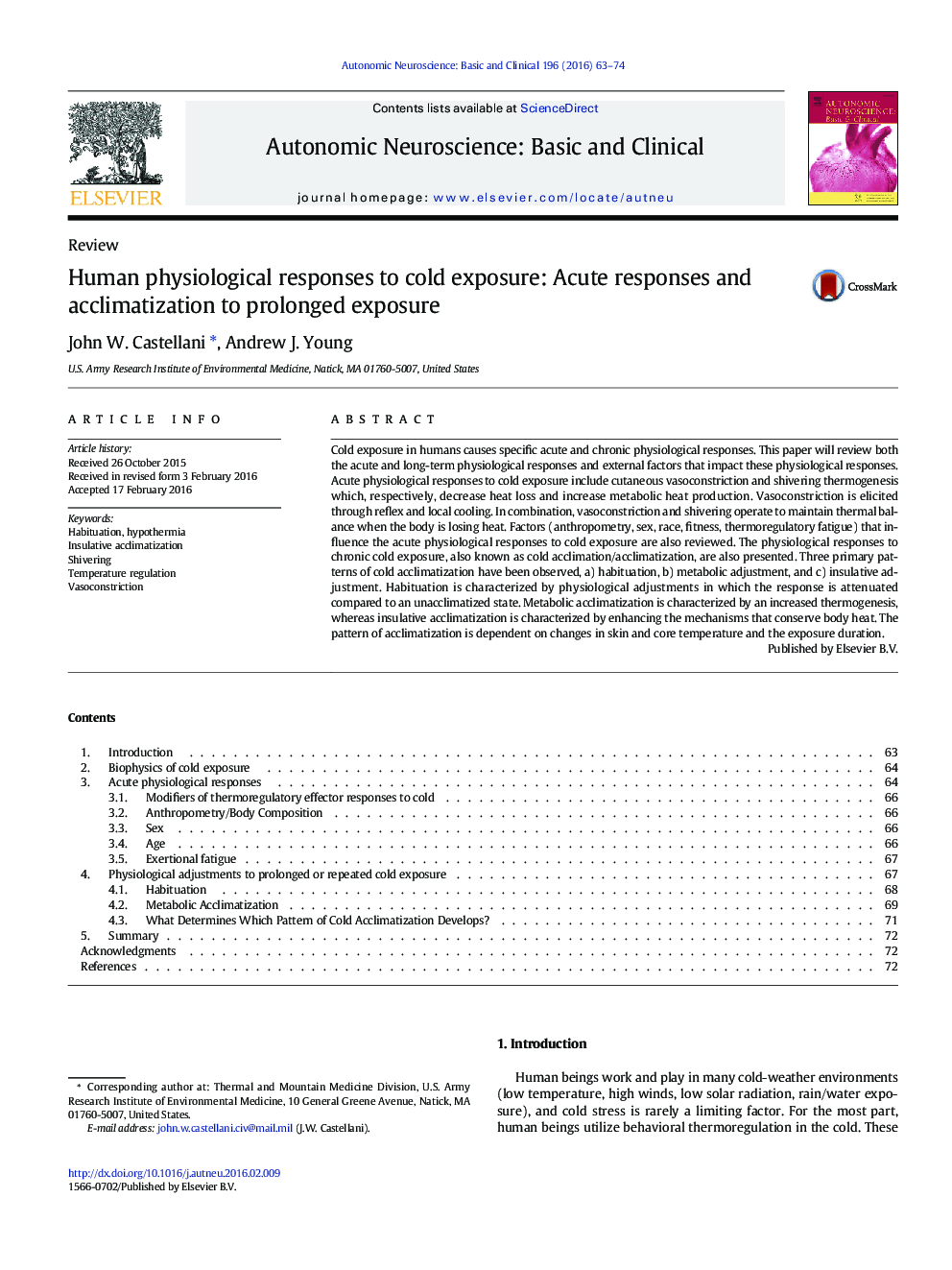| کد مقاله | کد نشریه | سال انتشار | مقاله انگلیسی | نسخه تمام متن |
|---|---|---|---|---|
| 6003897 | 1579519 | 2016 | 12 صفحه PDF | دانلود رایگان |
• Acute physiological responses to cold exposure include cutaneous vasoconstriction and shivering thermogenesis which, respectively, decrease heat loss and increase metabolic heat production.
• Anthropometry, sex, race, fitness, and thermoregulatory fatigue impact vasoconstriction, shivering, and thermal balance.
• Three primary patterns of cold acclimatization have been observed, a) habituation, b) metabolic adjustment, and c) insulative adjustment.
• The pattern of acclimatization is dependent on changes in skin and core temperature and the exposure duration.
Cold exposure in humans causes specific acute and chronic physiological responses. This paper will review both the acute and long-term physiological responses and external factors that impact these physiological responses. Acute physiological responses to cold exposure include cutaneous vasoconstriction and shivering thermogenesis which, respectively, decrease heat loss and increase metabolic heat production. Vasoconstriction is elicited through reflex and local cooling. In combination, vasoconstriction and shivering operate to maintain thermal balance when the body is losing heat. Factors (anthropometry, sex, race, fitness, thermoregulatory fatigue) that influence the acute physiological responses to cold exposure are also reviewed. The physiological responses to chronic cold exposure, also known as cold acclimation/acclimatization, are also presented. Three primary patterns of cold acclimatization have been observed, a) habituation, b) metabolic adjustment, and c) insulative adjustment. Habituation is characterized by physiological adjustments in which the response is attenuated compared to an unacclimatized state. Metabolic acclimatization is characterized by an increased thermogenesis, whereas insulative acclimatization is characterized by enhancing the mechanisms that conserve body heat. The pattern of acclimatization is dependent on changes in skin and core temperature and the exposure duration.
Journal: Autonomic Neuroscience - Volume 196, April 2016, Pages 63–74
